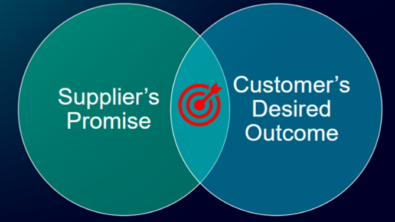Six digital trends to watch for in 2021

In the last decade, digital transformation has certainly been on firms’ agendas. Not so much an urgent item, but a desirable one. The goal was usually quality, productivity and improvements to the bottom line. In the last 12 months, the priority has shifted to the top.
With the world upended by COVID-19, digital transformation has become a critical necessity – the very survival of many organizations is now at stake. With the C-suite motivated and aligned to overcome the many challenges presented by lockdowns and the virus, the recent acceleration of digital initiatives has been miraculous. According to a study by McKinsey & Company, during 2020 firms accelerated the digitization of key operations by three to four years. Businesses have had to identify high-impact actions they can implement swiftly. In manufacturing, most procurement and supply-chain professionals say the main focus will be on the resilience of their supply chain. More broadly, driving out process inefficiencies to save costs is a key focus.
In 2021, agile organizations are more likely to survive ‘in the now’ and also to come out ahead when life returns to near-normal. Longer-term too, businesses that have invested in agility (perhaps stimulated by COVID), will be in the best position to deal with future external shocks like further lockdowns, geopolitical or economic instability, or the sudden arrival of powerful competitors (‘Ubers’) that disrupt their market.
As we progress into 2021, most firms have accommodated remote and safe working. Here are the biggest digital trends we are observing now among our European- and US-based clients. They all tie back to coping with change and delivering high-impact benefits very quickly.
1. Enterprise-wide workflow automation
Our customers are moving away from data silos and single ERP systems as one-stop-shop solutions for everything. There is a place for ERP, but right now firms are thinking more in terms of automating individual processes with dedicated applications. They are zooming into key processes and examining the fine detail for inefficiencies that can easily be solved via digital means. This might mean automating manual effort or replacing existing but cumbersome digital elements with new flexible apps to improve workflows and deliver quick wins. With the acquisition of Mendix by Siemens, the capability of creating integrated applications is now available to the entire Siemens ecosystem.
The pursuit of enterprise-wide workflow automation requires app development tools that facilitate integration with many different protocols and technologies.
2. Data Accessibility – The discoverable enterprise
Today’s decision-makers and automated systems need access to detailed and ever-changing information on everything from sales, to stock and materials, production capacity, supply chain data and workforce availability. Access to quality data on every aspect of the enterprise ecosystem at speed has become essential. This data must be in a standard form so that it can easily be integrated, analyzed, contextualized, combined with external data sources and acted upon.
Building the discoverable enterprise requires tools that facilitate cross-system data sharing making it available without friction for use in decision-making processes, cross-system digital workflows and accessible on demand to users and developers across the organization. Enterprise-grade security and governance are essential elements here.
3. Easily adaptable processes
When data is readily available, organizations can start to build business processes using reusable building blocks and software applications built using agile principles. This allows organizations to quickly adapt business processes for greater efficiency or when the environment changes and enables organizations to become disrupters themselves, grabbing new opportunities and realizing them quickly.
Using application templates and technical accelerators as well as reusable application components in combination with intelligent automation tools can speed up the process of creating bespoke applications. These can be specifically tailored to today’s needs yet easily re-molded to accommodate changes.
4. De-centralization – the democratization of digital transformation
Enabling different parts of an organization to digitize at their own pace should be a cornerstone of the digitization strategy and will increase the speed of transformation and innovation of an organization as a whole. This and the drive for agility implies getting rid of monolithic, inflexible legacy systems in favor of smaller, fit for purpose applications. The new application landscape will consist of a mixture of off the shelf and bespoke applications that are ever-changing, based on both internal and external challenges and opportunities.
Localized digital transformation initiatives are well supported by low-code development platforms. According to Forrester, ‘during the pandemic, many organizations embraced low-code platforms to build and deploy new apps fast. These experiences will drive most development shops to adopt low-code tools and more.’
5. Pursuit of distributed computing
In the last few years, businesses have moved towards “anytime, anyplace, anywhere” computing. Given COVID, distributed computing has progressed much faster than many organizations were planning for. Scenarios like combining cloud with on-premise deployments to create flexible and resilient application landscapes have become key and will continue apace through 2021. This can guarantee business continuity and adherence to local rules and regulations while at the same time offer scalability when there is increased demand. Governance and high-quality cloud deployment tools are essential to effectively managing these complex infrastructures.
6. Increasing use of IoT
With IoT hardware prices falling dramatically along with the onset of 5G networks, business cases for merging physical and digital worlds are becoming increasingly viable. For example, the tracking and monitoring via IoT of individual transport consignments, of key stock items and equipment are becoming commonplace. Digital sensors attached to many thousands of individual mechanical components in manufacturing facilities and logistics operations to track performance and predict servicing needs or urgent attention to avoid breakdowns is replacing standard maintenance schedules.
Success here is about more than the hardware. IoT apps need to combine sensor data with predictive analytics and machine learning to deliver useful outcomes. These Smart Apps can be sophisticated and challenging to design and build, but are available from third parties, and are built readily adaptable to different requirements. There’s also the huge data processing and analytics requirement to consider where 3rd parties (including Siemens partner, TimeSeries) offer IoT data platform-as-a-service options able to process millions of data inputs every minute.
As we enter 2021, business agility, continuity and driving out costs will be paramount. Leaders will want to invest in quick and positive short-term hits first, while also looking for longer-term agility and continuity assurance.
Whether you’re determined to create a more agile enterprise in 2021 or are simply looking to get more digital, TimeSeries can help. Watch this webinar to learn more about digitizing your manufacturing processes.
Author bio:
Jethro Borsje is CTO at TimeSeries has a background in Computer Science and Economics and has worked in IT for over 12 years. At TimeSeries, he is responsible for the innovation team developing smart app templates for the TimeSeries Smart App Suite. For him, using disruptive technologies is critical to creating high-quality apps with tangible business value.


